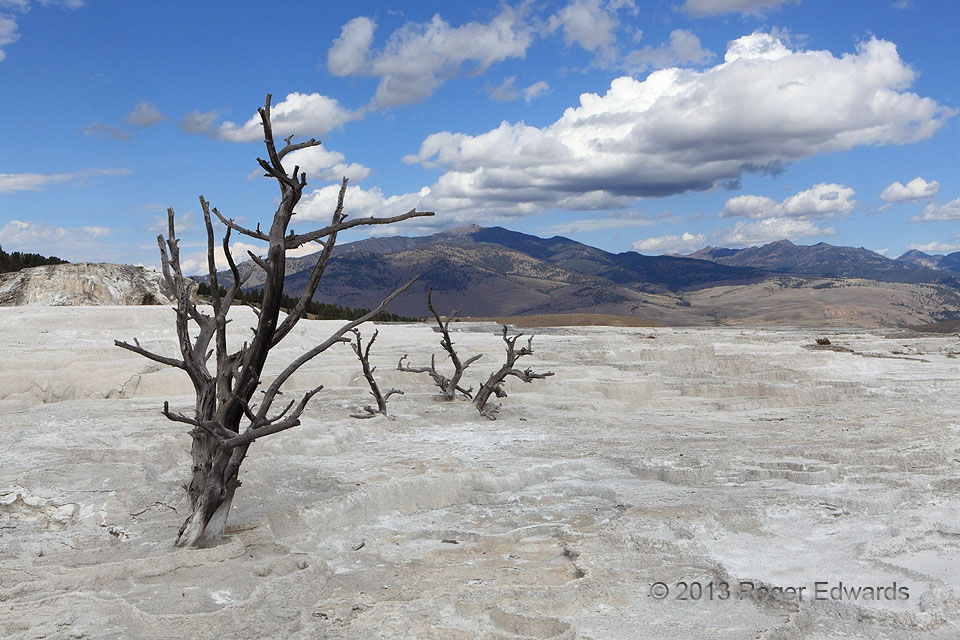Upon pondering Yellowstone National Park, most folks think of geysers, wildlife, hot pools, mountains: all amazing and worthy of the camera, for sure. Yet in one corner of the park lies a grimly stark landscape frontng the distant Absaroka Range—ledges of travertine, precipitated from old hot springs, that entombed the trees they encountered. In the dry, high-altitude climate, the old arboreal skeletons can last many decades. Though their effects can be similar, as documented elsewhere in Yellowstone, travertine and sinter are different chemically. Travertine consists mostly of calcium carbonate (limestone forming), whereas sinter can be calcareous or siliceous (silica-based “geyserite”).
Yellowstone National Park, WY (16 Sep 13) Looking NNE
44.9672, -110.7067
